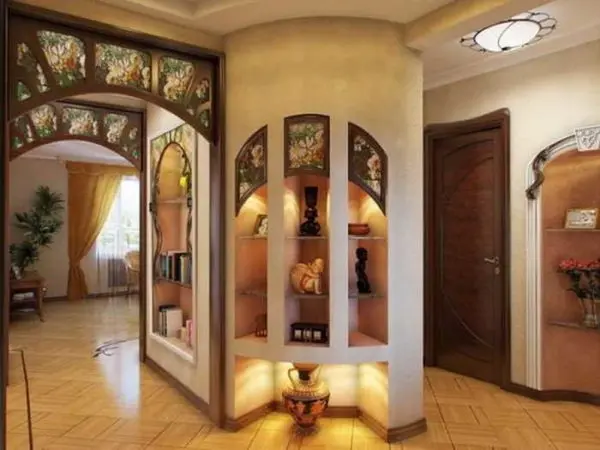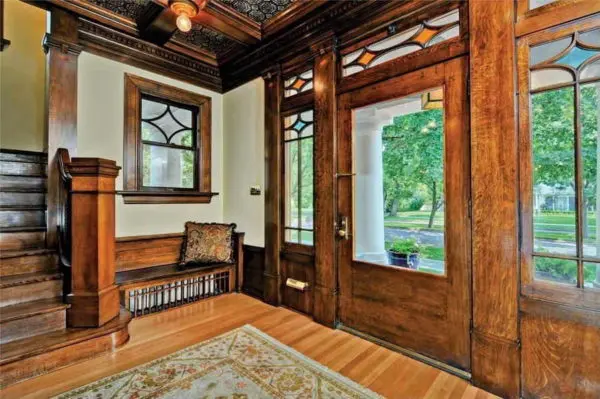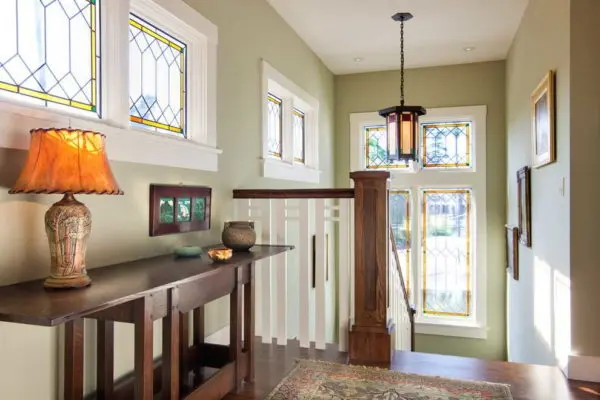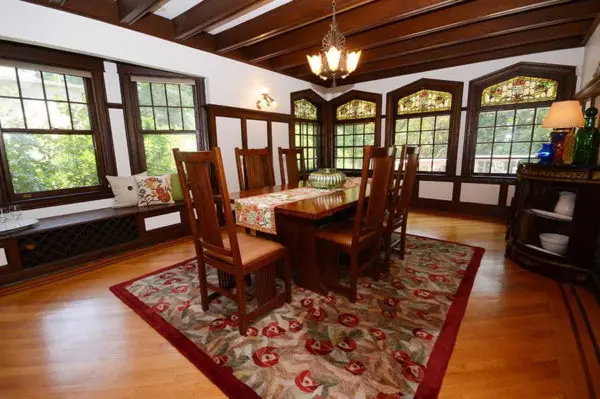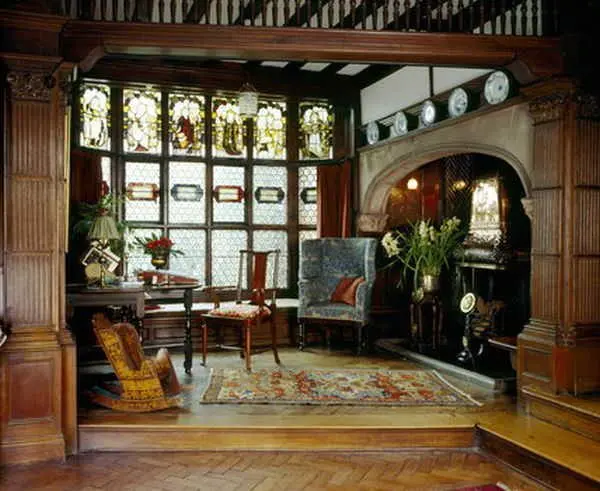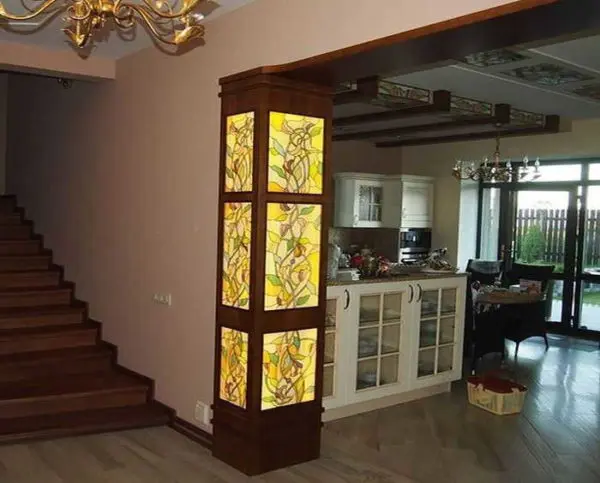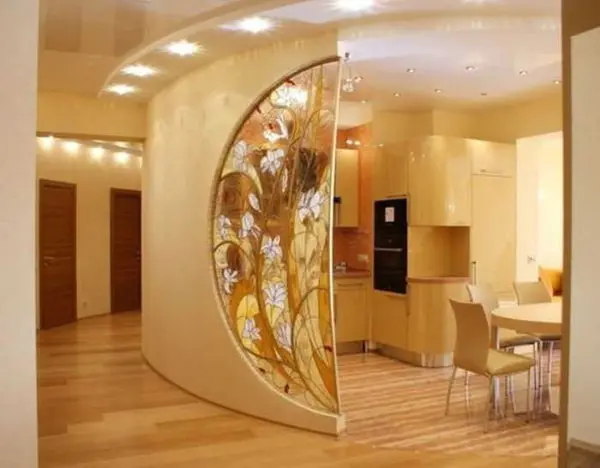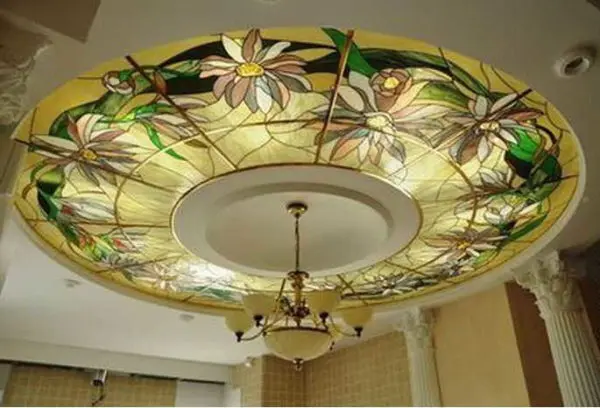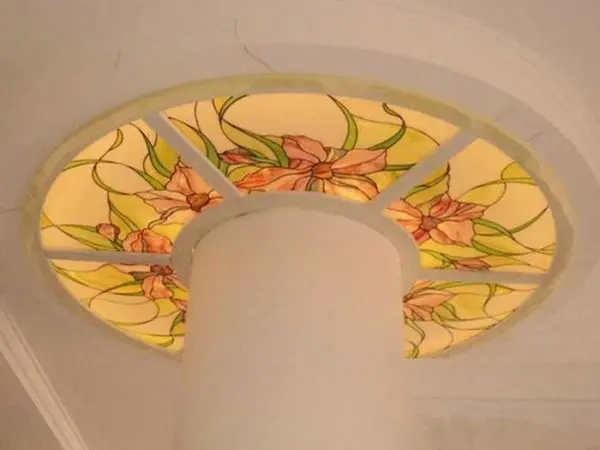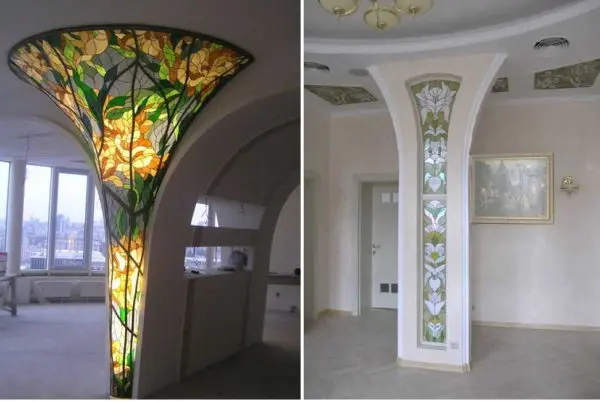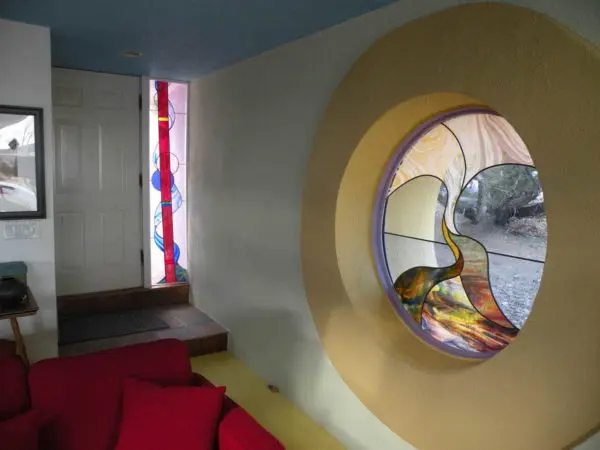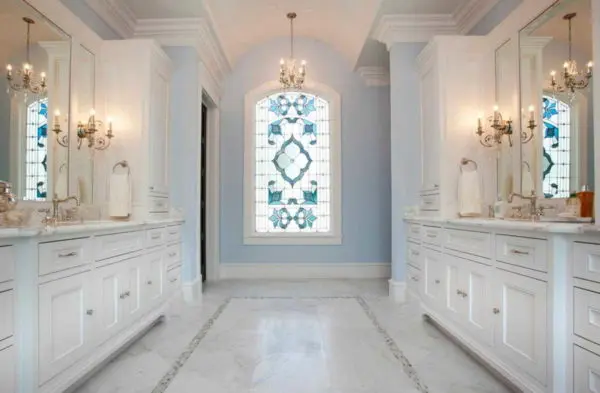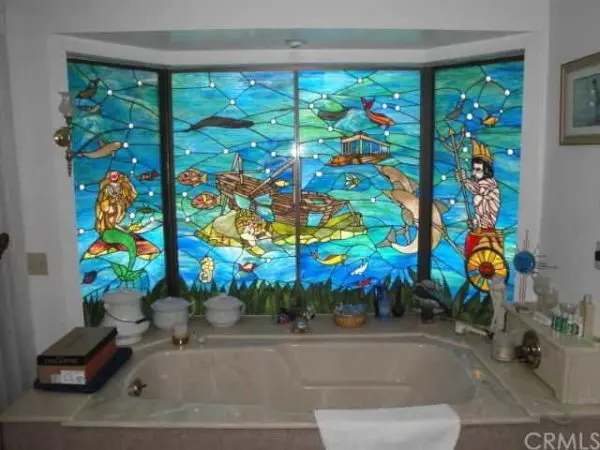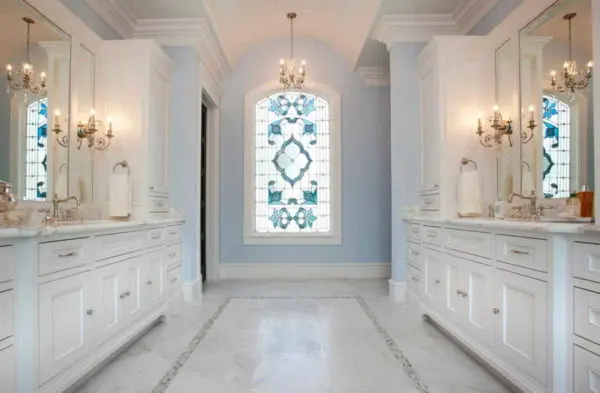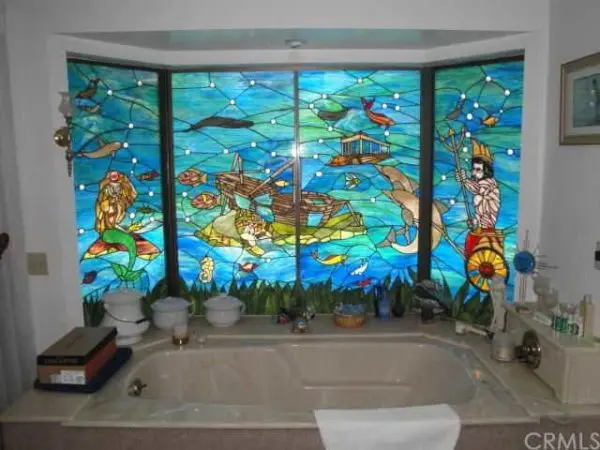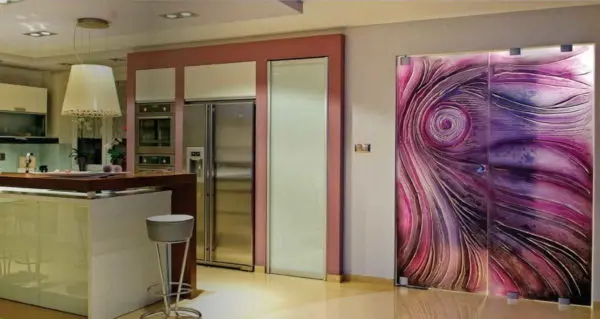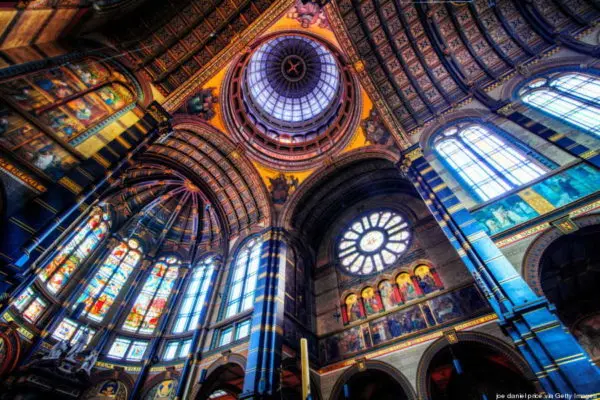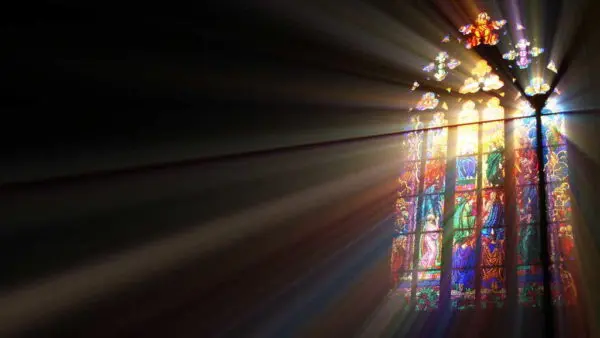Contents
Decorating your own home is no easy task. One way is to use glass patterns. We will discuss how to use stained-glass windows in the interior.
About techniques for creating stained glass images
Stained glass is a type of fine art in which colored glass is used to create paintings and images. In the old days, glass was available only to wealthy people, and stained glass paintings generally cost incredible money. Today, not too complicated and expensive techniques have been developed that make this pleasure quite accessible. There are several different techniques for creating such products:
- Type-setting and mosaic stained-glass windows. Made up of pieces of glass. They differ in that in mosaic, the fragments have the same shape and size, in typesetting, they are cut to the desired size and can have a different shape. Fragments are fixed in metal frames (lead, copper, brass). One of the varieties – soldering – the picture is obtained using tin partitions. This is one of the most ancient techniques. More modern – stained glass Tiffany. In them, the fragments are collected on a copper tape, due to which they have a smaller mass.
Traditional technique – inlaid stained glass - Fusing pieces of colored glass into a single whole (fusing or sintering technique). This is just a new and relatively inexpensive technology.
Fusing stained glass can be distinguished by the absence of jumpers - Etching technique. With the help of hydrofluoric acid, the color is etched in those places that should be more transparent. With this technique, two-color images are obtained. A more sophisticated technology of layer-by-layer etching allows you to make not only multi-colored, but also three-dimensional stained-glass windows.
Deep Etching Technique – Glass Matting - Painted stained glass. Images are created using special transparent paints, which are fixed at high temperatures (finish firing).
Painted stained-glass window – with the help of paints a pattern is applied and fixed at high temperature
Stained glass manufacturing techniques are different, but they all require special skills and knowledge. Some also require high temperature ovens.
Simulation methods
The complex technology of creating stained-glass windows is reflected in their cost – this is not a cheap pleasure at all. Therefore, in parallel with stained glass technologies, imitation methods have been developed since ancient times. The very first – to stick a thin sheet of painted paper on the glass – turned out to be very short-lived. But modern technologies make it possible to obtain more similar and durable pseudo-stained glass windows:
- Filler polymer contour. Created using transparent colored polymers in two stages. At the first, contours are drawn on the glass. After polymerization, the space between the contours is filled with colored compounds.

Filling technique – with the help of polymers create a pattern on the glass - Film stained glass. To create the contours, a self-adhesive lead tape is used, with the help of which the contours of the picture are drawn. Then the space is sealed with colored stained glass film.

Film stained glass is the easiest to make on your own. but not very durable - Overhead stained glass. It imitates a prefabricated stained-glass window: colored glass is glued onto the base – transparent glass. This technology is much simpler, since the strength is provided by the “substrate”.
Ways to imitate stained glass are technically simpler, which makes it possible to make some, not too complex drawings, for non-professionals. At the same time, the products look good, which determines their popularity.
Where can stained glass be used?
Initially, stained-glass windows were made exclusively on windows. The technology was difficult even to create flat-shaped products, and there was no talk of any curly products. Now the scope of stained glass images is much wider:
- Window.
- Doors with glass – entrance and interior.
- Partitions for zoning rooms.
- Ceiling and walls (panels with illumination).
- Lamps – shades or panels with backlight.
- Part of the furniture facades.

Stained glass doors can be in any style
It is necessary to use stained-glass windows in the interior very carefully: this is a very bright element of decor and it must match the entire environment. Rather, on the contrary, the decor is developed taking into account the pattern and colors that are used in the stained-glass window.
Stained-glass windows in the interior: where and how to use
To make a room with stained glass elements look harmonious, the shape and dimensions of the product, the theme of the picture, colors – all this is selected in accordance with the situation. Products made in this technique always attract attention. And this should be taken into account when developing a design, not to overload the interior with other bright details. If you look at photos of interiors with stained-glass windows, you will notice that colors and details are repeated in other furnishings, decor, and accessories.
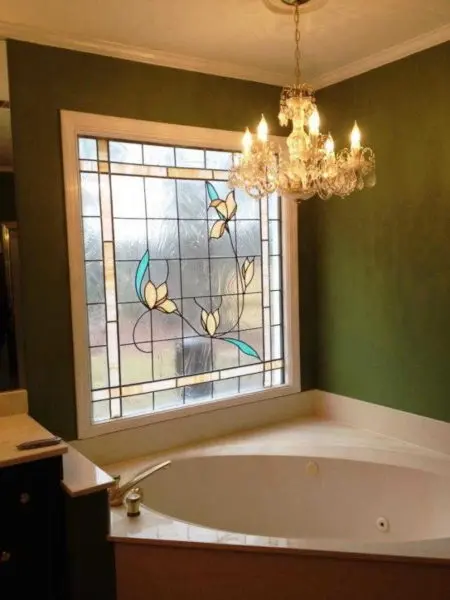
on the windows
First of all, stained-glass windows appeared on the windows. They were made for palaces and churches many hundreds of years ago. Naturally, the theme was appropriate – for the most part, scenes on a religious theme were depicted. The pictures through which the light poured impressed and inspired respect and awe.
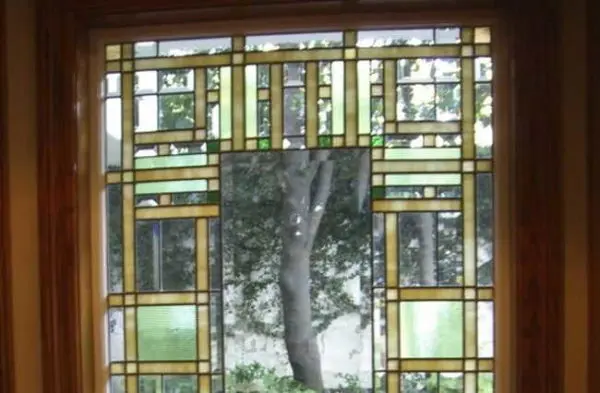
Modern stained-glass windows, which are used in the interiors of houses, apartments and offices, are more versatile in terms of subject matter. Most often, they depict landscapes, flowers, plants, geometric or floral patterns. And they all make an impression too – very beautiful, the play of light and shadows fascinates and I want to take a closer look at everything. A special effect is given by the light that pours through the stained-glass images into a dim room.
If the windows face the street and you do not want what is happening inside to be the property of outsiders, it is not necessary to use curtains. You can install a stained glass window made of patterned glass. Silhouettes will be visible, but nothing more.
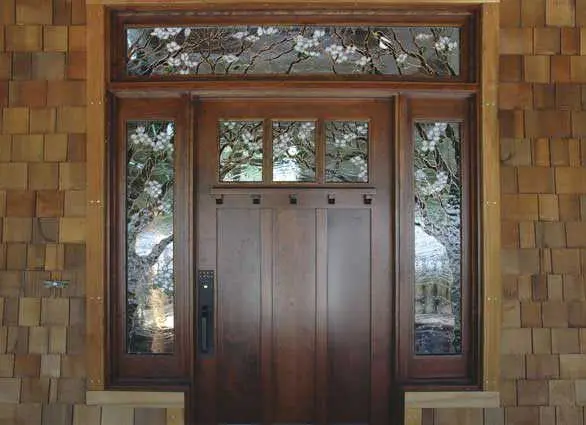
The disadvantage of using patterned and colored glass throughout the glazing area is the insufficient amount of light that will pass through such windows. If lighting is important to you, you can leave the central part as usual, and let the ornament only along the edges – along the perimeter, only at the top or on the sides – that’s how you like it.
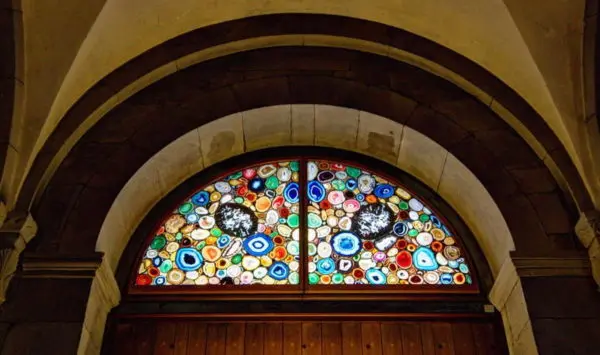
When choosing a picture of a stained glass image on a window, in addition to transparency, you also need to select colors. Stained glass is an element of the interior and the colors in it must be consistent, the same as those present in the interior or neutral (transparent, white, gray, beige, black).
It is also worth paying attention to the topic. In the kitchen, for example, fruits and vegetables would be appropriate; for a nursery, you can find a fragment from cartoons or fairy-tale characters; for a bathroom, a water or sea theme is suitable. In “common” spaces, the best choice is neutral themes (nature, cityscapes) or geometric patterns.
In the door
Stained-glass windows in the interior of a modern private house can often be seen in the design of the entrance group. A small fragment can be inserted into the door leaf, the same motif is repeated in the surrounding windows.
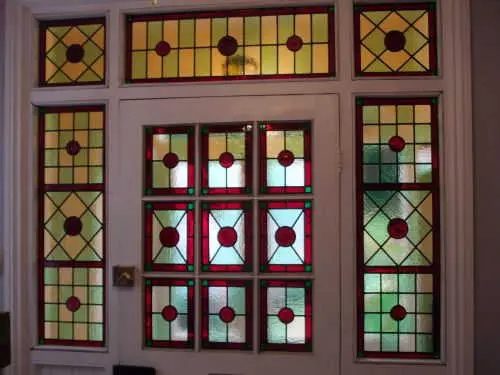
If such an abundance of stained glass fragments seems like overkill, you can leave patterns on the sides or only at the top.

Ideas for stained-glass windows and techniques are very different, but geometric patterns predominate, in which some fragments of flora and fauna can be included – a flower, a leaf, a butterfly, etc.
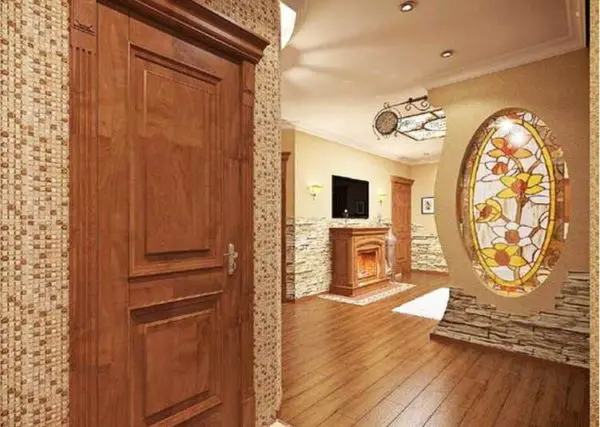
Geometric patterns are made up of fragments of the same shape, which simplifies the process of their creation. Due to this, the price of such products is lower than for “pictures” without repeating elements. This does not mean that there are no thematic drawings or cannot be. They are, and sometimes complex, but they are not accessible to everyone. You can see some drawings for decorating the entrance group in the photo below.
Interior doors are also sometimes made with stained glass inserts. The sizes of the inserts can be different – almost on the entire surface of the door leaf, only a narrow strip or circle, oval, etc.
In furniture
Furniture facades are also decorated with stained-glass windows. Too complex drawings are not used – not the same scale, and the effect will not be so bright. Therefore, for the most part, they use geometric patterns with or without plant elements.
Most often, kitchen furniture is decorated with stained glass inserts, and more specifically, the doors of wall cabinets. They are at eye level, which allows you to appreciate the beauty of the decor. In other furniture, such decoration is the exception rather than the rule. Such an object will draw too much attention to itself and it will be difficult to “balance” it. Yes, and in operation there will be a minus: heavy doors, which, if not handled carefully, can be damaged.
In partitions and on walls
In a modern interior, you can see stained-glass windows on the walls – in the form of illuminated panels or in interior and zoning partitions.
The panel is a picture, but the image material is colored glass. To highlight this piece of decor and achieve maximum effect, make a backlight. Previously, outdoor lamps were installed with a directed beam of light (as ordinary paintings are illuminated). But it is more effective to hide the backlight between the wall and the stained glass window. Today it is not difficult, as there are LEDs and LED strips, with which you can organize a diffuse or directional flow of light.
Partitions with stained glass inserts are a good idea. They can be used to solve two problems. The first is to let natural light into a windowless room. If you make glass inserts in the walls separating the corridor, during the day it will be possible to move along it without light. And in the evening, the light from the rooms will allow you to walk without stumbling.
The second task is to make zoning partitions “easier”. Modern trends – only a conditional division of large premises into zones of different functionality, studio apartments make us look for new solutions. One of them is a partition made of glass or with glass inserts. Glass can be ordinary with patterns, but stained glass windows are much more effective (and much more expensive).
Ceiling stained glass
Ceiling stained-glass windows are, for the most part, lamps, but built into the plane of the ceiling. They are usually built into suspended systems and, most often, into drywall systems. In apartments, such products very rarely remain without illumination. Another thing is that they give little light: colored and patterned glass transmits light in insufficient quantities, so you can’t do without other lighting devices.
Without lighting, a stained-glass window on the ceiling can only be in a private house. In this case, daylight enters the room through the ceiling. But the cost of such decoration will be very high – the design must withstand the onslaught of bad weather. One of the solutions is a cassette ceiling (they make a solid metal frame). For reliability, thick glass is installed on top, which takes the main load.
Stained glass windows are used in hallways and corridors. In such walk-through rooms, with a large number of doors, it is difficult to come up with another spectacular way of decor. Moreover, the stained-glass windows in the interior of the hallway, with a full guarantee, divert attention from the shortcomings of the layout.
Drawings for stained glass
Photo of interiors with stained glass windows
Creating an interior without experience and relevant knowledge is not an easy task. And creating an interior with stained-glass windows is even more difficult: it is too bright an element that must be coordinated with other objects and decor elements. Therefore, it is desirable to have a model by which you can navigate. For these purposes, we have collected photos of interiors with stained glass elements.
